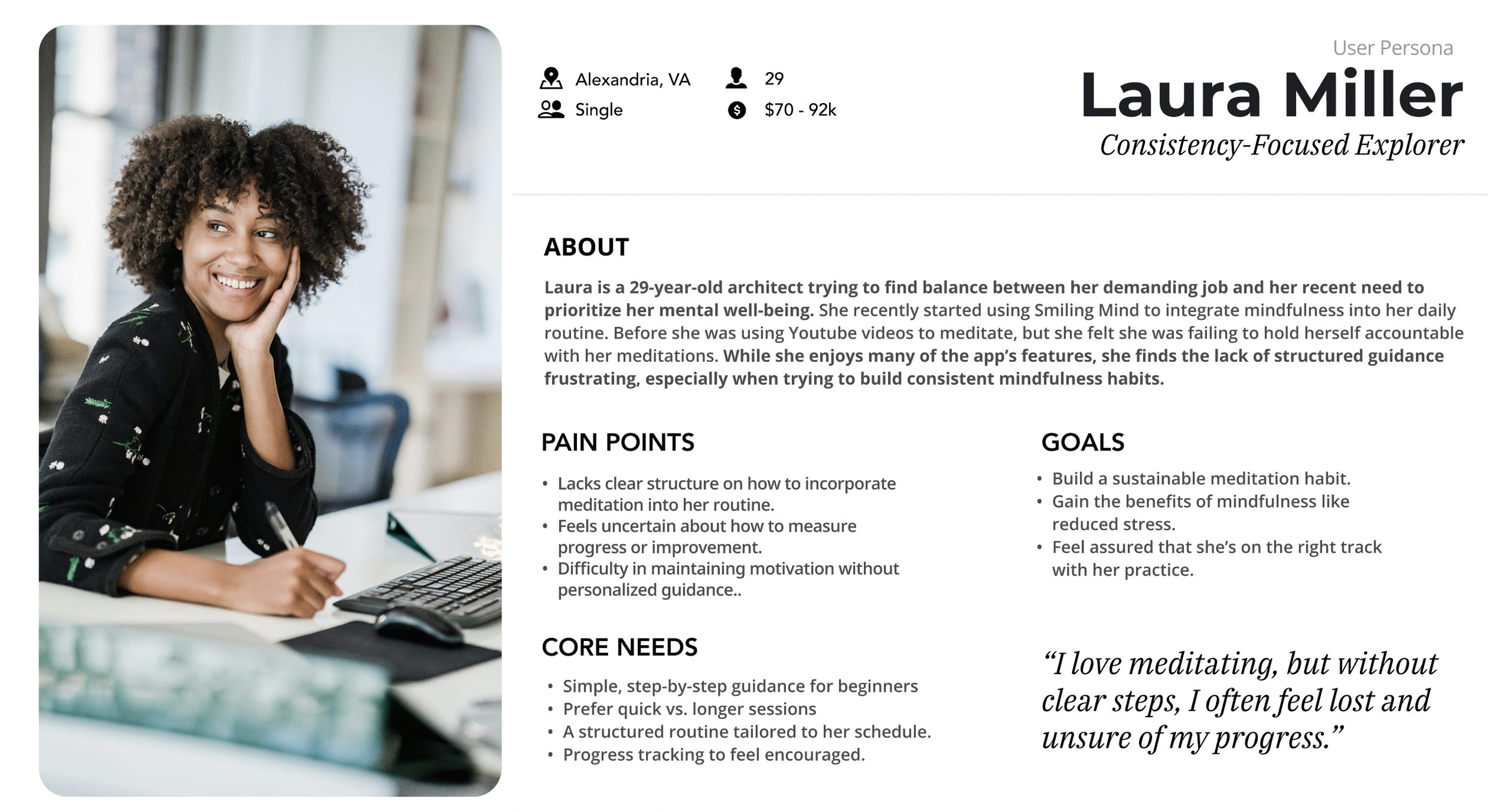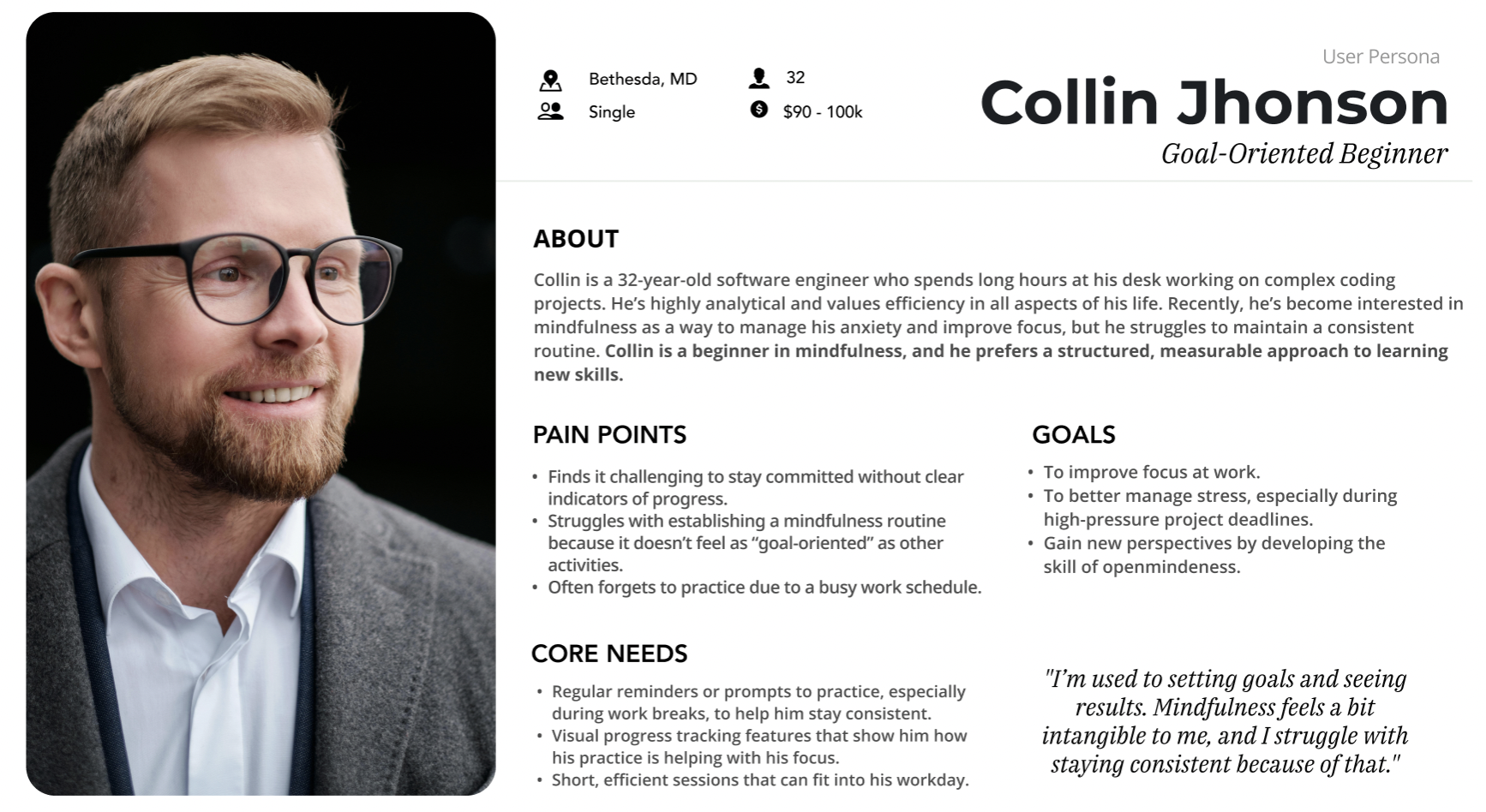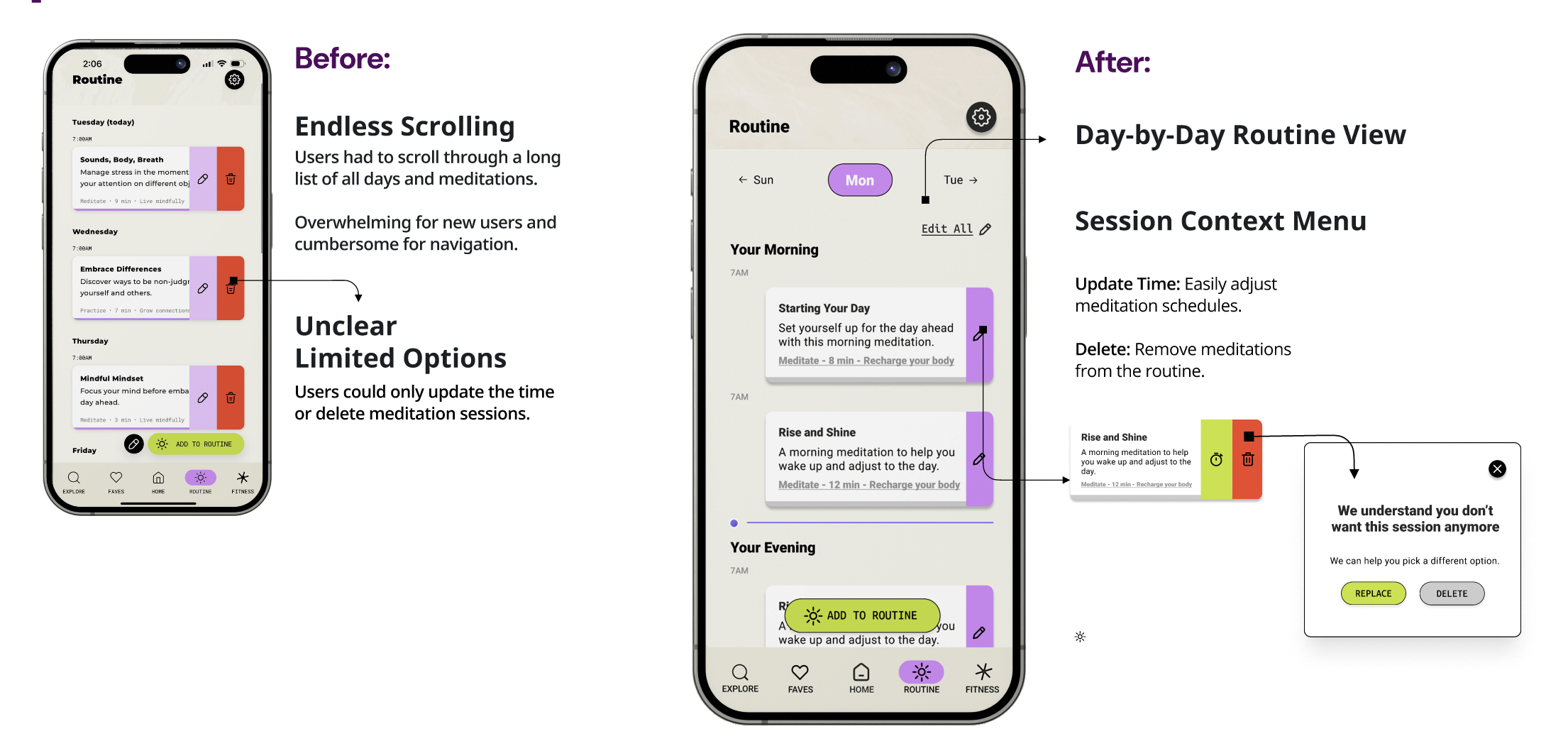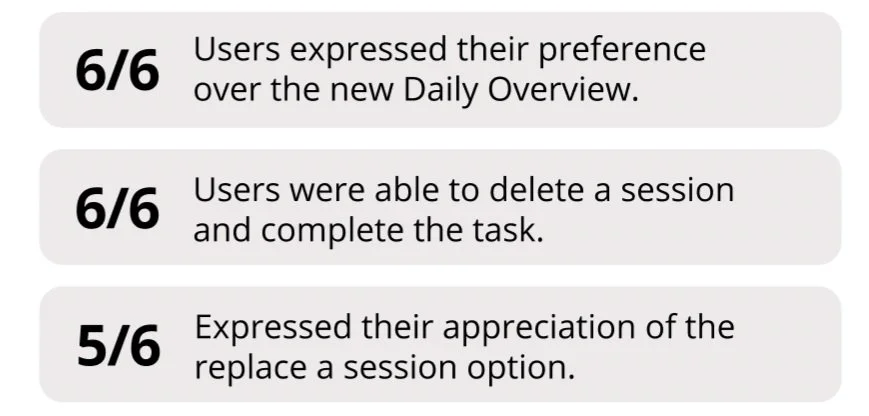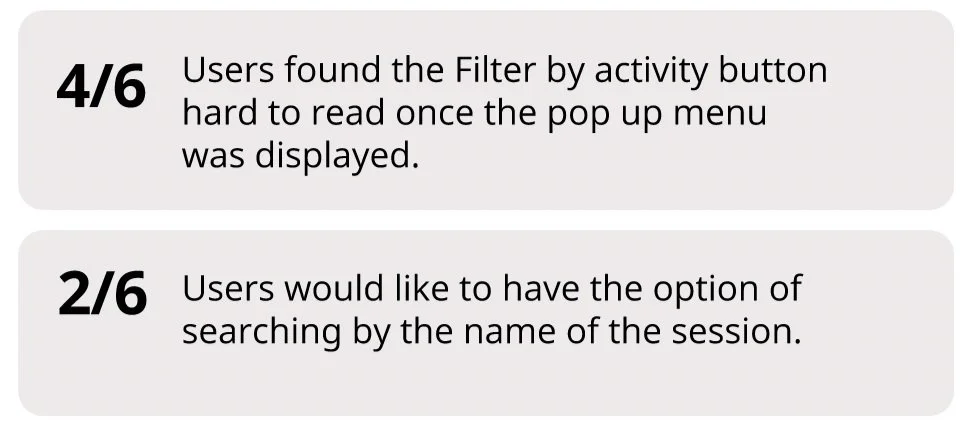SCOPE OF SERVICES
User Research and Analysis Interface Design Accessibility Assessment Usability Testing and IterationThe Project
The project seeks to enhance the Smiling Mind app by providing clear, structured guidance to help users build and sustain consistent mindfulness habits.
By addressing the common challenge of establishing routines without adequate support, the proposed improvements aim to deliver a more engaging and user-friendly experience, enabling mindfulness to become an integral part of users’ daily lives.
Disclaimer: This project was done in an academic setting with no affiliation to Smiling Mind.
The Desire to Create a
Lasting Impact on Mental Health
“I’ve always been passionate about using technology to create positive change.
I chose Smiling Mind as my client because their mission resonates deeply with my personal and professional values. They are not only a free and accessible app, but they also embody a vision of leveraging technology to create a meaningful impact on mental health.
Plus, since mental health has been a deeply personal journey for me, and I’ve seen firsthand how challenging it can be to build consistent habits like meditation.”
THE challenge
How might we support users establish consistent mindfulness habits by providing clear routine and app usage guidance, along with flexible, goal-tailored routines?
PROBLEM STATEMENT
Users beginning their mindfulness and meditation journey struggle to build consistent habits due to unclear guidance on when and how to practice.
targeted audience
A Focus on
“Beginners to Mindfulness”
The target users are new individuals to mindfulness and meditation, motivated to establish a sustainable mental health routine.
Thoughtful and disciplined, these users value structure and long-term habit-building. They are reflective and motivated by the potential for gradual, sustainable growth, appreciating tools that reinforce their commitment and provide accountability.
Consistency-Focused Explorer
Goal-Oriented Beginner
Energetic and ambitious, these users are driven by tangible outcomes like improved focus or reduced stress. They thrive on clear, actionable guidance and quick feedback, helping them stay engaged and motivated as they explore mindfulness for the first time.initial assumptions
research AREAS OF INTEREST
desk research results
1
4
No clarity on exercises/day.
Unclear on best app usage times.“For new users of Smiling Mind, having clear guidance on how to structure one’s mindfulness practice facilitates being consistent with their practice.
Given those needs, a customizable routine would not only help track progress but also will provide users with the confidence that they are on the right path, ultimately improving their experience and helping them manage stress more effectively.”
Typical Experience:
Daily or weekly usage routines.Frequency and length of meditation sessions.Specific features used (mood tracker, guided meditations).
UXR METHODOLOGY
cURRENT USER PAIN POINTS:
“Confusion for New Users”
No personalized progress tracking.
“Frustration with one-size-fits-all”.Competitive analysis
App Guidance:
Clarity of current instructions for building a mindfulness habit.Any confusion or areas where guidance is lacking.User feedback on app suggestions for daily practices.
Motivations & Barriers:
Factors driving regular app usage (e.g., stress relief).Reasons for skipping or stopping sessions (e.g., lack of time, unclear routines).
Individual formative research interviews were conducted with six participants via Zoom. Prior to this, I performed initial desk research looking at academic journals and medically reviewed articles to understand the current user experience. Following the interviews, a survey was distributed to gather quantitative insights on user values and preferences.
This approach allows for a more comprehensive understanding of user needs, directing the project's attention to specific features and functionalities while validating or disproving assumptions about the target audience demographics.
The qualitative data was analyzed using an affinity map created in Figjam, which helped to identify patterns and themes. I chose this mixed-methods approach to ensure that both qualitative and quantitative data informed the design process, fostering a user-centered perspective that enhances overall project relevance and effectiveness.
Lack of Customization
2
5
Limited Onboarding
App lacks integration guidance.No Routine Flexibility
Users can't align app with schedules.
“Fixed sessions don't consider preferences”.3
Contextual Challenges
Users want quick vs. longer sessions.
Challenges fitting mindfulness into busy lives.No Proper Acknowledgement of User Contexts
Smiling Mind is used in various settings, but it lacks the flexibility to adapt to different contexts.Prioritize Customization Needs
Users desire tailored suggestions for their routines and personal goals.USER INTERVIEW results
1
3
Currently, users struggle to build consistent habits due to unclear app usage and routine guidance.Lack of App Guidance
Strengthen Engagement Features
Users appreciate Smiling Mind's Wellbeing Tracker, as it allows them to monitor their journey. However, many users highlighted the lack of routine progress tracking tools, such as a streak tracker or a history of recently completed sessions2
4
THE PERSONAS
For the current case study, I developed personas that embody the diverse needs, behaviors, and challenges faced by Smiling Mind users. These personas helped me understand how individuals engage with the app and navigate their mindfulness journeys. Our aim is to provide clear guidance and customizable routines that empower users to cultivate consistent mindfulness habits.
Successful meditation apps excel by crafting engaging and habitual user experiences that not only foster brand loyalty but also drive growth. By understanding our users through these personas, we can tailor our strategies to enhance user experience and effectively support their mindfulness practices.
collin’S USER JOURNEY:
laura’S USER JOURNEY:
wireflows & wireframes
flow 1
Onboarding Experience & Routine Set Up
flow 2
Fitness Tracking
Proposed solutions:
Simplified Routine Interface:
Add an structured Daily Overview, so users can view their routine organized by day, improving clarity and planning. Segment meditation sessions into Morning, Evening, and Night categories.Targeted Filtering and toolTips:
Implement contextual tooltips and filters offering actionable mindfulness advice and best practices to help users navigate the different sections and collections more effectively.Enhanced Progress Tracking:
Expand tools to monitor mindfulness consistency and growth, alongside integrations with wellness and fitness metrics for a holistic view of progress.TESTING THE SOLUTION:
FIRST ROUND OF TESTING
Simplified Routine Interface:
Task: Interacting with the Routine Screen
"You’re now on the Routine Screen. Take a moment to explore the screen and share your initial impressions."
Subtask 1:
"Now, please try to delete one session from your routine.”
Results of Usability Improvements
SECOND ROUND OF TESTING
Task: Interacting with the Routine Screen
"You’re now on the Routine Screen. Take a moment to explore the screen and share your initial impressions."
Subtask 1:
"Now, please try to delete one session from your routine.”
Subtask 2:
"Now, please try to replace one session from your routine.”
Simplified Routine Interface:
Results of Usability Improvements
TESTING THE SOLUTION:
FIRST ROUND OF TESTING
Streamlined Filtering Options for Sections
Task: Interacting with the Explore Screen
"You’re now on the Explore Screen. Take a moment to explore the screen and share your initial impressions."
Subtask 1:
"Now, please explore the “Live mindfully” section, and find a “Learning session”.
Results of Usability Improvements
SECOND ROUND OF TESTING
Task: Interacting with the Explore Screen
"You’re now on the Explore Screen. Take a moment to explore the screen and share your initial impressions."
Subtask 1:
"Now, please explore the “Live mindfully” section, and find a “Learning session”.
Simplified Routine Interface:
Results of Usability Improvements
TESTING THE SOLUTION:
FIRST ROUND OF TESTING
Improved Fitness Screen for Tracking and Motivation
Task: Interacting with the Fitness Section
"You’re now on the Fitness Screen. Take a moment to explore the screen and share your initial impressions."
Subtask 1:
Find your streak, and share your impressions.
Subtask 2:
Find your weekly routine progress, and and share your impressions.
Subtask 3:
Find your wellbeing progress, and and share your impressions.
Improved Fitness Screen for Tracking and Motivation
Task: Interacting with the Fitness Section
"You’re now on the Fitness Screen. Take a moment to explore the screen and share your initial impressions."
Subtask 1:
Find your streak, and share your impressions.
Subtask 2:
Find your weekly routine progress, and and share your impressions.
Subtask 3:
Find your wellbeing progress, and and share your impressions.
Results of Usability Improvements
second ROUND OF TESTING
Results of Usability Improvements
FINAL KEY FINDINGS FROM TESTING
The prototype
FINAL LEARNINGS
Working on this project felt deeply personal and impactful. It reinforced the importance of creating tools that not only solve user problems but also promote clarity, peace, and personal growth
A Meaningful Opportunity to Design for Well-Being
Conducting user interviews and analyzing feedback taught me that even small design changes—like progress tracking or actionable tooltips—can have a transformative impact on users’ motivation and engagement.
The Power of Listening
This project reminded me why I am passionate about user-centered design—because it’s not just about improving functionality but about empowering users and helping them lead better lives through thoughtful, empathetic solutions.
Reinforced Passion for UX
NEXT STEPS
-
Design and integrate a badge system to reward users for consistent mindfulness habits. Provide growth insights to reinforce their progress and motivate continued engagement.
-
Add actionable mindfulness advice in tooltips, strategically paired with session filters. These tips will guide users on selecting and maximizing the right sessions for their needs.
-
Investigate opportunities to incorporate social sharing or community features, enabling users to celebrate milestones or engage with peers for added motivation.
-
Design and integrate a badge system to reward users for consistent mindfulness habits. Provide growth insights to reinforce their progress and motivate continued engagement.




